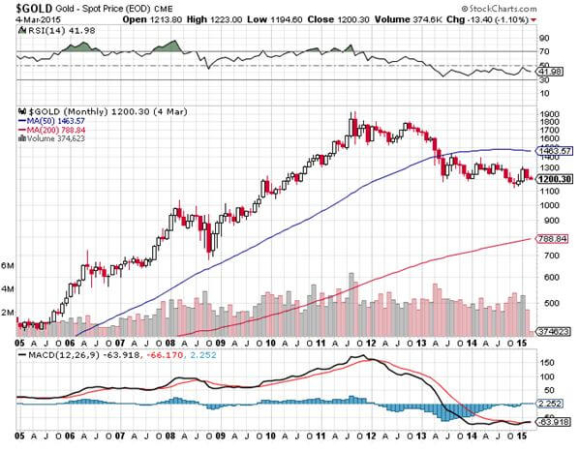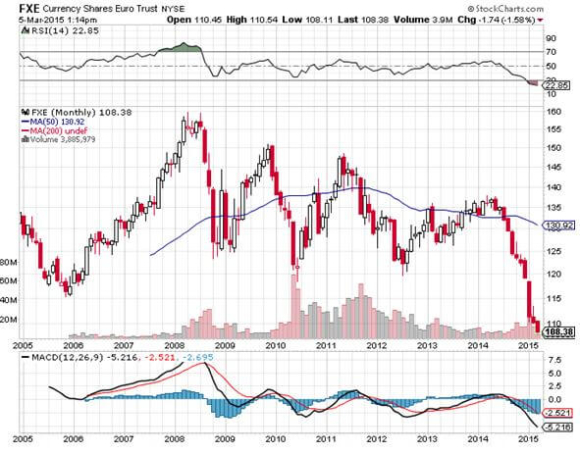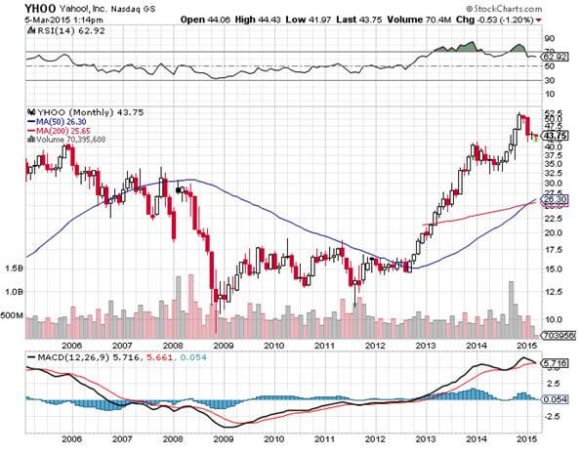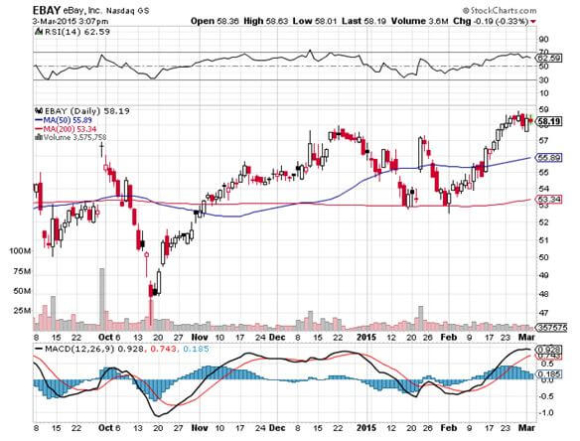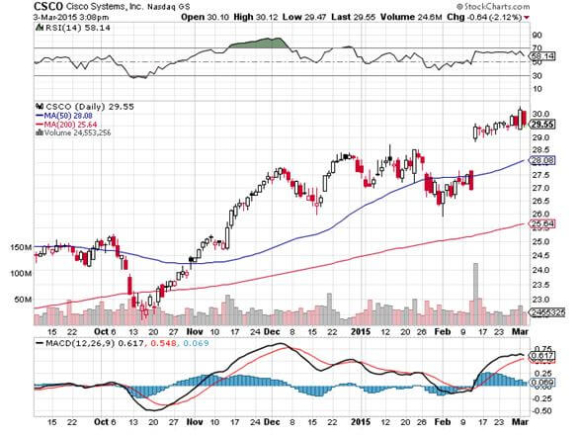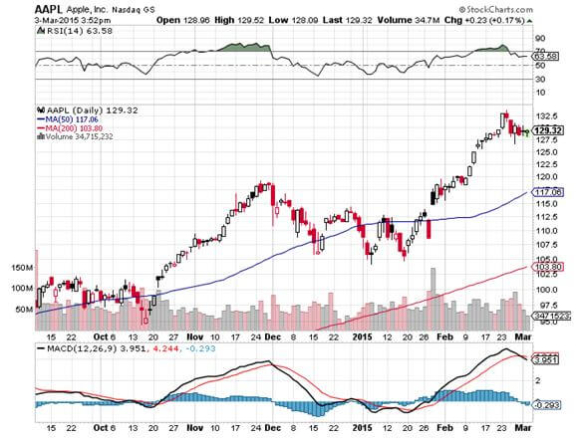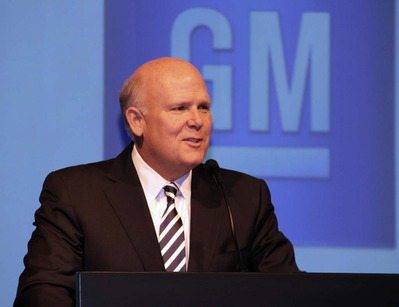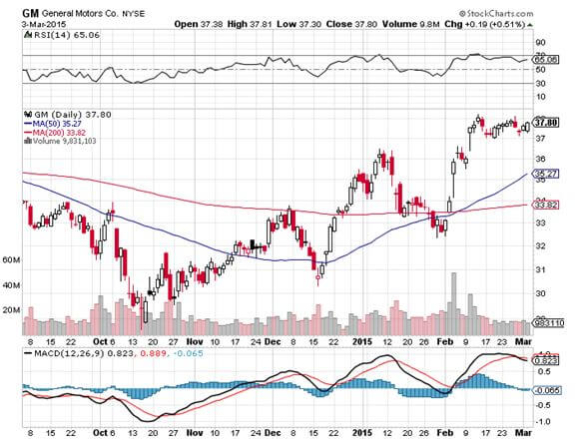Global Market Comments
March 6, 2015
Fiat Lux
Featured Trade:
(THE MAD HEDGE FUND TRADER?S SEVENTH ANNIVERSARY ISSUE)
(FRIDAY, APRIL 17 INCLINE VILLAGE, NEVADA STRATEGY LUNCHEON)
Yes, it seems like it was only yesterday. But as of February 1 the Diary of a Mad Hedge Fund Trader has been going out to idea hungry investors now for seven long years.
And what a seven years it has been!
So I will take the opportunity to explain the murky history of this august publication, which is now visited by thousands of readers every day from 135 countries around the world.
I am weak in Mali and North Korea, but am working on that, as soon as they get electricity.
Way back in mid 2007, I was toying with the idea of launching another hedge fund, and started emailing global macro ideas to a list of potential investors. This grew into a daily commentary.
However, I was soon to discover that the regulatory and legal costs of launching a new fund had risen astronomically since the last time I did this in 1989.
The competitive environment had also changed dramatically. When I first started, there were only 20 hedge funds. Now there were 10,000, many with marketing teams in the dozens targeting large institutional clients.
The bottom line was that it would cost a minimum of $10 million to get started, and I needed to raise at least $500 million in assets just to break even.
In other words, it was a young man?s game.
So I decided to post my comments on the Internet and see what happened.
Something happened.
First, I had to come up with a name. A quick search at the US Copyright Office records revealed that every possible combination of ?trading?, ?hedge fund?, ?macro?, and ?research? was already taken.
So, I modified the name of an obscure and long forgotten 1970 Alice Cooper movie, ?Diary of a Mad Housewife?. My friends liked it, so I ran with that.
Then, I had to build a website. After obtaining offers from professional website developers to do this for hundreds of thousands of dollars, I decided to try it myself. With teenagers accomplishing this, how hard could it be?
So I spent $5 and bought a used copy of Website for Dummies from Amazon. My goal was to see if I could launch a profitable Internet business for free.
Months of laborious programming followed, where I literally constructed the site on a trial and error basis. Another $5 investment bought a copy of Online Commerce for Dummies. That got me into the arcane world of merchant accounts, search engine optimization and SSL certificates.
I almost pulled it off. My total up front costs for the launch of the Diary of a Mad Hedge Fund Trader came to $500.
Finally, I put the letter up for sale on February 1, 2008 for $29 a month. I sold one subscription. I thought ?This was the height of hubris for me to think that someone would pay me money for my ideas on the Internet.?
Then a funny thing happened.
Other financial newsletters started stealing my stories. So I developed a business model that encouraged stealing. I started posting pieces on sites that then linked back to my own website, like Seeking Alpha, Business Times, Huffington Post, and Zero Hedge.
It also helped that I got a hold of Google?s 50 page long patent for their search engine, and figured out how to make my site unusually sticky and discoverable by searches.
Traffic started to build.
Then in 2010, I decided to enhance the product. Readers were raving about my trading recommendations, so I decided to create a premium Trade Alert service for $2,000 a year. This was quite a leap of faith, as the Diary price then was $799 a year.
This would give followers the exact details they needed to execute on my ideas, including price, number of contracts, ticker symbols and potential P&L?s.
The idea was to make subscribers feel like they were sitting at the desk of a top hedge fund trader. We launched the product on November 1, 2010.
I was thinking that I might sell a dozen subscriptions by the end of the year. So I didn?t bother to build an online store, expecting to create one when the traffic grew.
I asked buyers to send checks instead. Oops!
A week later, I happened to be driving by the post office, so I thought I would stop and pick up the mail. The postal clerk asked me to bring my truck around the back. I said I didn?t have a truck.
Some five minutes later, three out of shape postal workers were dragging a 50-pound mail sack across the floor. It was all for me.
I couldn?t believe it.
To make a long story short, we took in 6,000 checks for $2,000 each over the following three months. It was one of the greatest Internet marketing miracles in history. My $500 investment had suddenly turned into $12 million. Overnight, I become a part of Internet lore.
My entire family spent their Christmas vacation opening up letters and manually entering names and email addresses onto an excel spreadsheet.
Then something even more amazing happened. Many checks came with effusive letters of thanks. Much to my amazement, readers had been making hundreds of millions of dollars in profits trading off of my advice.
I had no idea.
I learned of college educations I had funded, mortgages paid off, parents retired early and uninsured chemotherapy treatments for kids paid off.
Some letters brought tears to your eyes, others laughs. I particularly remember the guy who thanked me for his new Toyota Tundra pickup truck, the luxury trailer that slept eight, the camos and the AR-15. He was going to visit me on his first cross-country trip.
He did, and I still live to tell about it.
The problem then arose of what to do with the checks. My main bank was then in Las Vegas. So I stuffed $12 million in checks into a backpack and headed for the airport.
Standing in line, I wondered if the metallic strips on the checks would set off the metal detectors. What was my explanation to Homeland Security going to be as to why I was carrying $12 million? Was this all some kind of elaborate money laundering operation? Was I a mafia courier headed for Vegas?
In then end, nothing happened. False alarm.
Once in Sin City, I took a taxi straight for the bank. No, I was not tempted to head for a casino.
I dropped the backpack at the teller?s window and said ?Please deposit these, I?ll be back.? They said ?Oh no, you can?t go anywhere. You have to stand here and watch us individually deposit each and every single check.?
They put two clerks on it, and it took eight hours. Minutes before closing, they handed me back a fist full of checks, that were unsigned, undated, or made out to me personally. I closed my account there shortly thereafter.
We have since used every opportunity to add services and functionality for subscribers. It?s all about getting you, the customer, to make more money.
I added staff around the world. The text alert service, although expensive, accelerated the Trade Alerts to the speed of light, globally. Hedge Fund Radio made its debut.
Mad Day Trader Jim Parker joined us with his excellent service in 2013. The travel videos came last summer, followed by training videos in the fall. You may have also noticed a massive upgrade of our website around then.
We are still growing, and looking for new ways to grow. I am always looking for ways to improve the product. Here next to Silicon Valley they like to say that ?As soon as you think you?re finished, you?re finished?.
So true, so true.
To click
on the first ever published Diary of a Mad Hedge Fund Trader newsletter, please click here. You will be quite amused by the commentary a full year before the stock market crash finally ended.
I strongly recommended that everyone protect their assets by piling into gold (GLD) at $900 an ounce (it went to $1,927). I also suggested traders sell short the dollar against the Euro at $1.40 (it went to $1.60).
There is also mention of Microsoft?s bid for Yahoo at $31/share. Jerry Yang later turned down the offer, and the stock plunged to $8, vaporizing $22 billion of market capitalization. It was one of the worst business decisions in history.
Does the quality of any of these tips sound familiar?
Finally, I want to thank the thousands of subscribers who have supported my research over the years and supported a lifestyle that would make Jay Gatsby envious.
Regards,
John Thomas
The Mad Hedge Fund Trader
 Thanks to You!
Thanks to You!
Global Market Comments
March 5, 2015
Fiat Lux
Featured Trade:
(GET READY FOR THE COMING GOLDEN AGE),
(SPY), (INDU), (FXE), (FXY), (UNG), (EEM), (USO),
(TLT), (NSANY), (TSLA)
SPDR S&P 500 (SPY)
Dow Jones Industrial Average (^DJI)
CurrencyShares Euro Trust (FXE)
CurrencyShares Japanese Yen Trust (FXY)
United States Natural Gas (UNG)
iShares MSCI Emerging Markets (EEM)
United States Oil (USO)
iShares 20+ Year Treasury Bond (TLT)
Nissan Motor Co. Ltd. (NSANY)
Tesla Motors, Inc. (TSLA)
Global Market Comments
March 4, 2015
Fiat Lux
Featured Trade:
(CHICAGO FRIDAY, APRIL 30 GLOBAL STRAGEGY LUNCHEON),
(WHY THERE IS NO BUBBLE IN STOCKS),
(AAPL), (EBAY), (CSCO), (BRCM), (AMZN),
(AN EVENING WITH ?GOVERNMENT MOTORS?), (GM)
Apple Inc. (AAPL)
eBay Inc. (EBAY)
Cisco Systems, Inc. (CSCO)
Broadcom Corp. (BRCM)
Amazon.com Inc. (AMZN)
General Motors Company (GM)
One couldn?t help but notice the outbreak of recollection, reminiscing and schadenfreude that took place yesterday when the NASDAQ briefly tipped over 5,000.
I remember it like it was yesterday. I am still amazed by the frenzy that took place, witnessing the kind of bubble one only sees twice a century. And I was right in the thick of it, living in nearby Silicon Valley.
Business school students were raising $50 million with a one-page business plan. An analyst predicted that Amazon (AMZN) shares would double to $400 in a year. It happened in only four weeks.
All of my attorneys quit, taking up prestige jobs as chief legal counsels at new start ups, taking stock in lieu of pay, dollar bills dancing in front of their eyes. They were replaced by the ?B? team. Other law firms started accepting stock as payment of legal fees.
I knew more than one office secretary who took pay cuts to $15,000 a year in exchange for stock, which they later sold for $2 million.
When I tried to expand my company, I couldn?t find a larger office to rent. San Francisco had run out of office space. So I bought a house for $7 million instead and worked from there. That was no problem, as everyone had $7 million then.
But what I remember most fondly were the parties. The beneficiaries of every IPO sought to celebrate with the biggest party in Bay Area history, each one eclipsing the last. An entire industry of creative party organizers sprung up, seeking to outdo every competitor.
I remember most fondly the Vodka luge carved out of a giant block of ice, where a pretty hostage poured 100 proof super cooled rocket fuel straight down your throat. By midnight, the passed out bodies started piling up on the periphery.
Those were the days!
Which brings us to today, when handwringing is breaking out all over. Investors are afraid that we are just now putting in the double top of the century in NASDAQ, with a very neat 15 years taking place between peaks.
Is it time to sell?
I think not.
Today, we see a completely different world from the one we knew in 2000. Global GDP then was a mere $32 trillion. Today it is 2.5 times higher at $78 trillion. Using this simplistic measure, the GDP adjusted value of NASDAQ should be 12,187.
The high tech index peaked at a price earnings multiple of 100 times earnings. Today it is 30 times. That means the multiple adjusted high for NASDAQ today would be 16,650.
Technology stocks then didn?t pay dividends. Today, look at Apple (AAPL), which pays a 1.50% dividend worth $11.25 billion in annual payouts. This revenue stream provides enormous support under the market, and almost makes Apple shares perform more like bonds than stocks.
Which brings me to a new investment thesis.
What if the stocks that peaked in 2000 are only now just breaking out and starting long bull runs? I am thinking of quality technology names that have completed long, sideways, basing moves. Ebay (EBAY), Broadcom (BRCM), and Cisco (CSCO) leap to the fore.
The possibilities boggle the mind.
I think that in order to get NASDAQ to really get the bit between its teeth, one thing has to happen. Apple has to stop going up.
You really only had to make one stock call in 2014. You had to be overweight Apple. If you did, you were a star. If you didn?t, then you are still probably looking for a new job on Craig?s List.
Managers are behaving as if the past were a prologue, loading the boat with Apple with their eyes firmly fixed on the rear view mirror. That explains the blowout 13% jump in Steve Jobs? creation so far in 2015, some $90 billion in market capitalization.
All you need is for investors to stop buying Apple for 15 minutes and rotate into other big tech names. That was my logic behind my Trade Alert to buy Cisco two weeks ago. If that occurs, it will be off to the races for NASDAQ once again.
Remember that old saw in technical analysis land, ?the longer the base, the bigger the air above it.?
A vodka martini, anyone?
Yesterday, the auto industry announced blowout sales figures for February which came in at an eye popping SAAR of 17 million units. We are now within a hairs breadth of the peak last during the salad days of 2001-2002.
It all provides more evidence the ultra bull scenario for the rest of 2015, which has the economy growing a 3% annualized rate during the final three quarters of the year. The stock market should follow, especially the shares of General Motors (GM), which are clearly breaking out to the upside, targeting the low $40?s.
It looks like the controversial ignition disaster is now fully priced into the shares. The only remaining question is which low level subordinate will go to jail over this. The cost to the firm will be a pittance.
Technically, the current GM is not liable for these transgressions. That belongs to the old, bankrupt GM. But I expect the company will do the right thing and settle with the aggrieved plaintiffs to maintain the image of their brand, if nothing else.
So I though it would be timely to review my last interview of the CEO of General Motors, Dan Akerson, who, sadly, recently retired for health reasons. He was replaced by the new litigation target du jour, GM child, Mary T. Barra.
Long-term readers of this letter are well aware of my antipathy towards General Motors (GM). For decades, the company turned a deaf ear to customer complaints about shoddy, uncompetitive products, arcane management practices, entitled dealers, and a totally inward looking view of the world that was rapidly globalizing.
It was like watching a close friend kill himself through chronic alcoholism.
During this time, Japan?s share of the US car market rose from 1% to 42%. The only surprise when the inevitable bankruptcy came was that it took so long. This was traumatic for me personally, since for the first 30 years of my life General Motors was the largest company in the world.
Their elegant headquarters building in Detroit was widely viewed as the high temple of capitalism. I was raised to believe that what was good for GM was good for the country. Oops!
I opposed the bailout because it interfered with creative destruction, something America does better than anyone else, and gives us a huge competitive advantage in the international marketplace. Probably 10% of the listed companies in Japan are zombies that should have been killed off 20 years ago. Without GM a large part of the US car industry would have moved to California and gone hybrid or electric.
When an opportunity arose to spend a few hours with the new CEO, Dan Akerson, I gratefully accepted. After all, he wasn?t responsible for past sins, and I thought I might gain some insights into the new GM.
Besides, he was a native of the Golden State and a graduate in nuclear engineering from the Naval Academy at Annapolis and the London School of Economics. How bad could he be?
When I shook hands, I remarked that his lapel pin looked like the hood ornament on my dad?s old car, a Buick Oldsmobile. He noticeably winced. So to give the guy a break, I asked him about the company?s outlook.
Last year was the best in the 105-year history of the company. It is now the world?s largest car company, with the biggest market share. The 40-mpg Chevy Cruze is the number one selling sub compact in the US. GM competed in no less than 117 countries, and was a leader in the fastest growing emerging market, China.
I asked how a private equity guy from the Carlyle Group was fitting in on the GM board. He responded that all of the Big Three Detroit automakers were being run by ?non-car guys? now, and they generated profits for the first time in 20 years.
However, it was not without its culture clashes. When he publicly admitted that he believed in global warming, he was severely chastised by other board members. He wasn?t following the official playbook.
When I started carping about the bailout, he cut me right off at the knees. Liquidation would have been a deathblow for the Midwestern economy, killing 1 million jobs, and saddling the government with $23 billion in pension fund obligations.
It also would have deprived the Treasury Department of $135 billion in annual tax revenues. It was inevitable that in the last election year the company became a political punching bag. Akerson said that he was still a Republican, but just.
GM?s Chevy Volt is so efficient, running off a 16kWh lithium ion battery charge for the first 25-50 miles that many are still driving around with the original tank of gas they were delivered with a year ago.
Extreme crash testing by the government and the bad press that followed forced a relaunch of the brand. Despite this, I often get emails from readers saying they love the car.
The summer production halt says more about GM?s more efficient inventory management than it does about the hybrid car. GM?s recent investment in California based Envia Systems should succeed in increasing battery energy densities threefold.
However the Volt is just a bridge technology to the Holy Grail, hydrogen fuel cell powered cars, which will start to go mainstream in four years. These cars burn hydrogen, emit water, and cost about $300,000 a unit to produce now. By 2017, GM hopes to make it available as a $30,000 option for the Chevy Aveo.
Another bridge technology will be natural gas powered conventional piston engines. These take advantage of the new glut of this simple molecule and its 80% price discount per BTU compared to gasoline.
The company announced a dual gas tank pickup truck that can use either gasoline or compressed gas. Cheap compressors that enable home gas refueling are also on the horizon. Fleet sales will be the initial target.
Massive overcapacity in Europe will continue to be a huge headache for the global industry. There are just too many carmakers there, with Germany, England, Italy, France, and Sweden each carrying multiple manufacturers.
Governments would rather bail them out to save jobs and protect entrenched unions than allow market forces to work their magic. GM lost $700 million on its European operations last year, and Akerson doesn?t see that improving now that the continent is clearly moving into recession.
I asked if GM stock was cheap, given the dismal performance since the IPO. It is still just above the $33/share launch price. Now that the government has unloaded its shareholding the way for further appreciation should be clear.
Also, the old bondholders once owned substantial numbers of shares and were selling into every rally, holding back the stock price. That overhead supply now appears to be gone.
Akerson said that a cultural change had been crucial in the revival of the new GM. Last year, the Feds announced an increase in mileage standards from 25 to 55 mpg by 2025. Instead of lawyering up for a prolonged fight to dilute or eliminate the new rules, as it might have done in the past, it is working with the appropriate agencies to meet these targets.
Finally, I asked Akerson what went through his head when the top job at GM was offered him at the height of the crisis. Were they crazy, insane, delusional, or all the above? He confessed that it offered him the management challenge of a generation and that he had to rise to it.
Spoken like a true Annapolis man.


Shifting GM from This?.

To This?.

And This
?Our economic machine really works. It?s worked since 1776...Look at any milestone you want to pick, and over time it?s gotten so much better,?
said Oracle of Omaha, Warren Buffett.
Global Market Comments
March 3, 2015
Fiat Lux
Featured Trade:
(MARCH 4 GLOBAL STRATEGY WEBINAR),
(THERE ARE NO GURUS),
(THE COST OF CLEAN COAL),
(KOL), (UNG), (PCG), (BTU), (JOY)
Market Vectors Coal ETF (KOL)
United States Natural Gas (UNG)
PG&E Corporation (PCG)
Peabody Energy Corp. (BTU)
Joy Global, Inc. (JOY)
Global Market Comments
March 2, 2015
Fiat Lux
Featured Trade:
(FRIDAY, APRIL 3 HONOLULU, HAWAII STRATEGY LUNCHEON)
(THE FED GIVES THE GREEN LIGHT TO STOCKS),
(AND MY PREDICTION IS...),
(TESTIMONIAL)
The best is yet to come with regards to the US economy, says the Federal Reserve.
The oncoming onslaught of positive economic data means that the bull market in stocks will have years to run.
The full impact of the Fed?s aggressive five year, $4.5 trillion program of monetary easing will only start to be felt in 2015. Everything up until now has just been a warm up. Inflationary effects won?t be felt until 2016.
That is the opinion of no less an authority than Stanley Fischer. He should know. He is the new vice chairman of the Federal Reserve.
The implications for the stock market are massive.
Of course, all of this comes at a price in the form of pernicious inflation somewhere down the road. Personally, I don?t think that dramatic price rises will kick in until we are well into the 2020?s, when my ?Golden Age? scenario unfolds.
This is all part of the elaborate Kabuki play that Fed officials are orchestrating in the run up to the first rise in US interest rates in a decade. The consensus for such a bump is now that it will take place at the June meeting.
I don?t think we will see it until 2016, and then only in infinitesimal increments, as in well spaced quarters of a percent. I look for this view to my friend and mentor, former Berkeley professor and current Fed governor, Janet Yellen. Her attitude is clearly that rates won?t go up until she sees the white?s of inflation?s eyes.
With wages still stagnant nationally, it could be a long wait. But even Janet says she ?feels good about the economic outlook.?
Still, she would rather err on the side of being late than early, since the effects of deflation are now so widespread. I need look no further than the confines of my own sheltered life.
PG&E has cut the cost of overnight charging of My Tesla so substantially that I have put my solar panel installation on hold, as prices will surely drop further. The recent collapse of oil prices only adds fuel to that fire. I am sure that you readers could come up with a thousand similar examples of your own.
Adding to Fed caution will be last week?s downward revision of Q4 GDP growth, from 2.6% to 2.2%. This is clearly not an economy that is threatening any inflationary pressures whatsoever, at least according to the numbers. That is less than half the 5% print we saw in Q3.
However, this is not to say that we should go pedal to the metal, and dump our last sou into the stock market at these levels. The inner trader in me calls for caution.
You may notice that the Mad Hedge Fund Trader?s model portfolio is keeping its cards very close to the vest these days, running a 20% ?RISK ON? holding against a 10% ?RISK OFF? position.
That is kilometers away from the 100% ?RISK ON? stance I boldly strapped on at the October market bottom.
This is one of those rare instances where it is best to trade like everyone else. Don?t chase stocks. Just wait for the next 4% correction, and then dive back in. It?s worked for the past 3-? years, except for a single instance.
Try to make 3%-4% a month, and you?ll be OK. Reach for 10%, and you?ll make nothing, or worse, lose 10%.
With corporate earnings robust, and productivity expanding, why shouldn?t it continue?
In the meantime, practice dancing the Charleston, and invest in manufacturers of ?flapper? dresses.
You?ll need them.
 A French Sou
A French Sou
 Flappers Dancing the Charleston
Flappers Dancing the Charleston
Legal Disclaimer
There is a very high degree of risk involved in trading. Past results are not indicative of future returns. MadHedgeFundTrader.com and all individuals affiliated with this site assume no responsibilities for your trading and investment results. The indicators, strategies, columns, articles and all other features are for educational purposes only and should not be construed as investment advice. Information for futures trading observations are obtained from sources believed to be reliable, but we do not warrant its completeness or accuracy, or warrant any results from the use of the information. Your use of the trading observations is entirely at your own risk and it is your sole responsibility to evaluate the accuracy, completeness and usefulness of the information. You must assess the risk of any trade with your broker and make your own independent decisions regarding any securities mentioned herein. Affiliates of MadHedgeFundTrader.com may have a position or effect transactions in the securities described herein (or options thereon) and/or otherwise employ trading strategies that may be consistent or inconsistent with the provided strategies.


